Join The Perovskite Connect - Where The Perovskite INDUSTRY Meets!
The first ever worldwide conference and exhibition dedicated to the growing Perovskite INDUSTRY, bringing together all the key players from around the world and from all segments of the perovskite INDUSTRY.
This is the event where the latest technology and commercial developments are announced, where the key conversations take place, and where new ideas and future projects and ecosystems are forged.
Enjoy a curated world-class agenda and masterclass programme, experience and feel the latest technologies and connect with peers, partners, and customers from around the world.
This cutting-edge event will attract the global community, from applied research and material suppliers to equipment makers, manufacturers and end users - who will all gather here to advance the future of electronics.
This event will be co-located with the Future of Electronics RESHAPED (add hyperlink) conference and exhibition, which is the global home of the printed and flexible electronics industry, including all aspects of ink formulation, coating, printing, etc. This is a highly synergetic event as ink formulation, coating, printing, and processing could play a key role in the development and industrialization of perovskites. This event features over 600 participants, 78 exhibitors, and 70 talks.

AMAREA Technology
Robert
CTO
Ceramic-Based Printed Electronics Enabled by Multi-Material Additive Manufacturing
Recent developments in multi-material additive manufacturing enable the direct integration of conductor and resistor structures within ceramic-based components. By combining materials different functional properties - such as glass ceramics with conductive metals (including silver and copper), conductive ceramic-ceramic pairings, and ceramic-metal combinations, components with integrated electrical functions and a high degree of miniaturization can be realized directly as a component, rather than as separate parts that need to be assembled.

ATLANT3D
Laszlo Izso
Applications Engineer
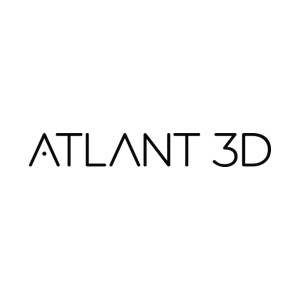
Direct Atomic Layer Processing (DALP) & Advanced material combinatorics
The exponential growth of computing, connectivity, and intelligent devices demands breakthroughs in how materials, electronics, and systems are built. Conventional semiconductor and microfabrication methods are increasingly constrained by limitations in scalability, flexibility, and sustainability.
Direct Atomic Layer Processing (DALP) offers a new approach: atomically precise, direct, and selective material processing on complex surfaces. Instead of incremental improvements to established methods, DALP represents a paradigm shift, from planar, rigid, and centralized chip-making toward flexible, on-demand, and design-driven fabrication.
This capability enables rapid material discovery and prototyping, accelerating the path from concept to functional device. It also opens new opportunities in advanced packaging, MEMS and sensors, and catalysis, where precision, adaptability, and material diversity are critical. DALP paves the way toward a future where innovation in materials and devices can happen faster, smarter, and with unprecedented freedom.

Alpha Precision Systems
Katsumi Araki
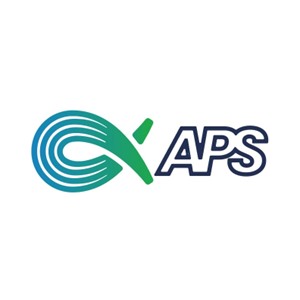
Slot-die coating & Turnkey solution for Perovskite manufacturing
APS (Alpha Precision Systems Inc.)’s slot-die coater, featuring the world’s most advanced technology in the perovskite industry, serves as our flagship product.
Our extensive product lineup includes not only slot-die coater, but also vacuum drying and annealing systems. Beyond perovskites, our technologies are applied across diverse industries, including semiconductors and flat-panel displays.
In the perovskite solar cell industry, our integrated production line, centered around the slot-die coater, enables wet-coating processes essential for scalable device fabrication.
To address key challenges in scaling-up, process optimization, and efficiency improvement, APS is developing large-scale slot-die coating system incorporating cutting-edge technologies. By assembling and testing all process equipment in our own facility, we gain a comprehensive understanding of the entire perovskite process and deliver optimized solutions to the market.
Furthermore, we are developing specialized equipment for next-generation 2-terminal tandem devices. These innovations are expected to make a significant contribution to the evolution and industrialization of the perovskite market.
Antolin
Stephan
Automotive interiors dynamic decoration with electronic ink
Antolin, a global leader in automotive interior solutions, collaborates with E Ink, a pioneer in electronic ink technology with the aim to integrate E Ink’s innovative Prism TM technology into vehicle interiors, significantly enhancing user experience and optimizing energy efficiency. This technology utilizes colored particles which are electronically controlled and enables the creation of dynamic surfaces with endless experiential designs that can change color and patterns on demand or automatically based on functionality, such as alerts or call notifications. Unlike traditional backlit solutions, it consumes power only during color transitions, contributing to greater energy efficiency and, consequently, improved driving range. The result of this alliance has allowed the development and validation of the technology under real automotive use conditions, in which Antolin is a reference. Apart from that, several concepts have been manufactured for interior trim such as “upper door trim deco” and “night/day deco” in collaboration with Walter Pack partner. Antolin could offer automotive manufacturers and end users’ new surfaces that are customizable, smart, and green while reinforcing customers´ branding.

Armor Smart Films
Fabien Resweber
Business Developer
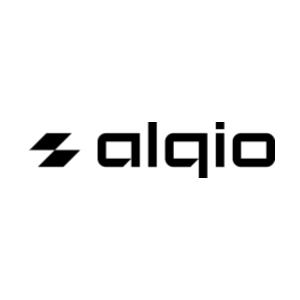
Armor Smart Films: Empowering Scalable Innovation in Functional Surfaces
Armor Smart Films, an ARMOR Group company is a trusted industrial partner, supporting clients from design to large-scale production of functionalized surfaces.
With advanced capabilities in coating, printing, and formulation, Armor Smart helps accelerate innovation and market entry.
A key focus lies in electroactive technologies using P(VDF-TrFE) copolymers, known for their excellent piezoelectric properties.
These materials enable the development of next-generation sensors, haptic interfaces, heating surfaces, and medical instrumentation—combining flexibility, efficiency, and seamless integration.
Auburn University
Pradeep Lall
Macfarlane Endowed Distinguished Professor, Director, Cave3, Nextflex Technical-governing Council
Additively Printed In-Mold Electronics Circuits and Sensors for Automotive
Wire harnesses account for a significant portion of the vehicle's weight. The integration of advanced driver assistance systems into automotive platforms has seen the emergence of a number of safety features, including lane departure warning, driver alertness monitoring, cross- traffic alert, guidance, navigation, and control. Touch surfaces in the automotive platform are presently used for little more than aesthetic appeal. However, the integration of human-machine
interfaces on the touch surfaces requires additively printed in-mold electronics. The processes for the printing of sensors, in addition to the integration of surface mount electronics for signal processing, are not yet known for additively printed conformal electronics. The proliferation of advanced driver assistance systems (ADAS) has contributed to the rise in cabling on the automotive platform to connect numerous sensors and surfaces to control units. Modern cars have thousands of wires that can total several kilometers in length, and the wire harnesses in some models can weigh as much as 36 kg. This increase in weight has become problematic for automakers, particularly given stricter CO 2 emission standards. There is now a strong interest in developing lighter and cheaper wire harnesses to reduce the carbon footprint of cars. However, conventional wire harnesses possess design limitations that necessitate the use of connectors and receptacles to integrate them into the automobile's body and link them to the control units. 3D printed in-mold electronics (IME) is a cutting-edge technology that is gaining traction in the electronics industry owing to its ability to minimize wire harnesses and carbon footprint. In this paper, a number of additive print processes have been studied for their process-performance interactions in thermo-formed in-mold electronics. Specifically, printed circuits with surface-mounted components have been explored with direct write printing and gravure offset printing. There are several substrates which are compatible with the thermoforming process required for the creation of in-mold-electronics such as polyethylene terephthalate glycol (PETG), polycarbonate (PC), high impact polystyrene (HIPS). Applications examined include signal processing and electrodermal sensors for the measurement of the galvanic skin response. Electrodermal sensors measure the surface conductance of the skin to determine the state of the autonomic nervous system. These wearables could acquire biosignals with high accuracy, which makes them beneficial in scenarios like assessing a driver's emotional and medical condition during various driving scenarios. Components have been attached using electrically conductive adhesives, low-temperature solders, and ultra-low-temperature solders. Signal process performance has been demonstrated through the fabrication and characterization of AC-DC converters. Performance parity has been assessed through comparison of the thermoformed circuits with conventional rigid circuits with identical design. Impact of variables including print speed, print pressure, nozzle temperatures, platen temperatures, sintering temperature, sintering time, reflow profile or curing profile on the realized circuit performance has been assessed. For the electrodermal sensors, the in-mold sensor response has been compared with that of the medical grade sensor to demonstrate the sensor accuracy, repeatability, sensitivity, and long-term stability.
Biography:
Pradeep Lall is the MacFarlane Endowed Distinguished Professor and Alumni Professor with the Department of Mechanical Engineering and Director of the Auburn University Electronics Packaging Research Institute. He holds a Joint Courtesy Appointment in the Department of Electrical and Computer Engineering. He is a member of the technical council and academic co-
lead of automotive and asset monitoring TWGs of NextFlex Manufacturing Institute. Prior to joining Auburn University, Dr. Lall worked for Motorola, focusing on various aspects of wireless communications products. He is the author and co-author of 2-books, 15 book chapters, and over 1000 journal and conference papers in the field of electronics reliability, manufacturing, and survivability. He holds three U.S. Patents, Three-Motorola Outstanding Innovation Awards, and Five-Motorola Engineering Awards. His publications have garnered over 13,000 citations, an H- index of 53, and an i10-index of 317. Dr. Lall is ranked in the highest quantile amongst the top 2
percent of Scientific Researchers worldwide, based on data compiled by Stanford University. The ranking system includes scientists in 20 fields and 174 sub-fields. On ranking by field and sub-field, based on career publications, Dr. Lall is ranked in the top 0.3 percent out of 143,311 scientists in the subfield of mechanical engineering & transportation. Dr. Lall is a fellow of the ASME, a fellow of the IEEE, a fellow of the NextFlex National Manufacturing Institute, and a
fellow of the Alabama Academy of Science. He is the recipient of the SMTA Founder’s Award in 2024 for exceptional contributions to Electronics Manufacturing, SEMI R&D Achievements Award for landmark contributions to Additive Manufactured Electronics in 2023, ASME Avram Bar-Cohen Memorial Medal in 2022, IEEE Biedenbach Outstanding Engineering Educator
Award in 2020, Auburn University Research Advisory Board’s Advancement of Research and Scholarship Achievement Award in 2018, IEEE Sustained Outstanding Technical Contributions Award in 2018, NSF’s Alex Schwarzkopf Award for Technology Innovation in 2016, Alabama Academy of Science Wright A, Gardner Award in 2016, IEEE Exceptional Technical Achievement Award in 2014, ASME-EPPD Applied Mechanics Award in 2013, SMTA’s
Member of Technical Distinction Award in 2013, Auburn University’s Creative Research and Scholarship Award in 2013, SEC Faculty Achievement Award in 2013, Samuel Ginn College of Engineering Senior Faculty Research Award in 2007 and 2016, and over Fifty Best-Paper Awards at national and international conferences. Dr. Lall has served in several distinguished roles at the national and international level including serving as a member of the National Academies Committee on Electronic Vehicle Controls, IEEE Electronics Packaging Society Board-of-Governors, Member of the IEEE Reliability Society AdCom, IEEE Electronics Packaging Society Representative on the IEEE-USA Artificial Intelligence Policy Committee, IEEE Reliability Society Representative on the IEEE-USA Government Relations Council for R&D Policy, Chair of Congress Steering Committee for the ASME Congress, Member of the technical committee of the European Simulation Conference EuroSIME, Associate Editor for the IEEE Access Journal, and Associate Editor for the IEEE Transactions on Components and Packaging Technologies. Dr. Lall is the founding faculty advisor for the SMTA student chapter at Auburn University and a member of the editorial advisory board for SMTA Journal. He received the M.S. and Ph.D. degrees in Mechanical Engineering from the University of Maryland and the M.B.A. from Northwestern University.
Blackleaf
Michael Friess
Sales director
Graphene-based Electric Heating : how graphene films are reinventing surface heating in the industry
Blackleaf produces graphene-based heating inks.
Thanks to an innovative and sustainable graphene production process, combined with deep expertise in chemical formulation, we offer our clients comprehensive solutions and a diversified portfolio of graphene-based heatable inks.
Our heating inks are used to bring heat onto surfaces through two complementary methods: flexible heating foils and heating coatings.
CEA
Noella Lemaitre
Ingnieur de Recherche
Challenges for upscaling Perovskite/Silicon tandem solar cells
The crystalline Silicon (c-Si) / Perovskite (PK) 2 terminal (2T) Tandem solar cells have
recently reached a certified power conversion efficiency of 34.9% [1], exceeding the
theoretical limit of silicon single junction. This makes this tandem a good growth driver for
the PV technology. Those results are really promising but are still obtained at lab scale on
small size devices (≤1cm²), the Perovskite technology being less mature than the well-
established Silicon one.
Even if demonstrations on larger cells or modules are becoming more and more numerous,
several challenges remain in order to upscale the materials and the processes toward the
industry. In order to reduce the time to market of this new technology,
This work ultimate goal is then to develop efficient and stable Silicon-Perovskite (Si-PK)
tandem devices that can be manufactured with techniques compatible with the nextgen PV
industry.
Starting from ~9 cm² devices with PIN architectures, with PCE above 30%, the CEA is trying
to develop materials and processes compatible with industrial requirements. Several
bottlenecks are identified and will be discussed among the upscaling of interface layers or
Perovskite’s one on textured Cz silicon wafers, the development of low temperature screen printing
process, the long term stability of encapsulated Tandem cells…..

CRM Group
Mariia Arseenko
Project Leader
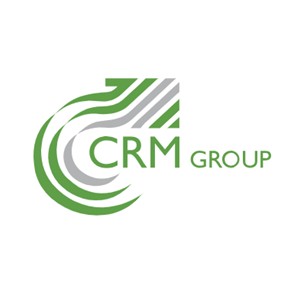
Electronics printed on 3D Surfaces for Large-Area and Harsh-Environment Applications
Developing advanced processes for printed and additive electronics enables the integration of connected devices and sensors onto 3D objects, addressing the challenges posed by heavy industry and harsh environments. The unique expertise at CRM, particularly in working with metallic and associated materials, meets the stringent demands of printed electronics, including integration of printed patterns onto large area 3D surfaces, operation at very high temperatures, functionality in metallic and corrosive environments, and compatibility with circular product designs.
Ceradrop - MGI Digital Technology
Frédéric Soulier
General Manager
Driving Growth Through Innovation: The Role of Additive Processes in Electronics Manufacturing
This talk will demonstrate how digital additive manufacturing serves as a key engine for growth in the printed circuit and metal etching industries. We will showcase how digital additive processes break traditional constraints, enabling on-demand fabrication and just-in-time production. This capability not only facilitates efficient small-batch manufacturing but also fosters a dynamic environment for innovation. Discover how this technological shift empowers companies to develop new products and capture new market opportunities.
CondAlign
Morten Lindberget
Visible
Novel conductive films – from launch to volume production
Anisotropic conductive films based on an innovative technology for particle alignment have been tested and qualified and have proven its value and advantages in several application areas since its introduction two years ago. However, gaining acceptance and scaling up the use of a novel product that requires a new mind set from designers and product owners is not a walk in the park.
Products based on this technology include anisotropic electrically conductive films (ACF) as well as thermal conductive materials and films (TIM). Both groups of products are produced with the same innovative technology for achieving anisotropic structure and conductivity. This allows for significantly reducing the amount of filler particles, which again allows for reduced cost in production and assembly, improved performance, and reduced carbon footprint, compared to related products.
The qualification with respect to technical performance, BOM-cost reduction, and sustainability is a requirement and starting point for entering the industrialization phase, where processes for high volume assembly need to be established and implemented.
Processes and equipment for current solutions are already established and in place, and a novel technology must prove its commercial potential before an integrator can move to investing in new processes and equipment.
The presentation will focus on this transition from technical qualification to high volume efficient production, industrialization, and commercial integration.
Conductive Technologies
Alicen Pittenger
Director of Sales
Engineering Functionality: Material Strategies for Modern Sensors
The development of electrochemical and biosensors hinges on the strategic selection of materials in a layered "stack-up" configuration. Each material plays a distinct role in optimizing sensor sensitivity, stability, and performance. Advances in materials, substrates, and functionalized compounds have driven the evolution of these sensors, enabling their application across a wide range of fields, from healthcare to environmental monitoring. This talk explores the importance of material design in enhancing sensor functionality, highlighting key materials and emerging trends, while addressing the challenges of integrating these layers for high-performance systems.
CubicPV
Adam Lorenz
CTO
Enabling Durable Perovskite Tandems with Scalable Architecture and Manufacturing Methods
CubicPV is enabling the next leap in solar module design, increasing efficiency to extend the era of LCOE reduction for solar energy with tandem module technology. Perovskite technology has shown tremendous potential over the past decade with tandem performance approaching 35%, but not yet made a commercial impact due to lack of bankable demonstrations combining the trifecta of efficiency, durability and scalability.
This presentation will explain Cubic’s approach to decouple the perovskite and silicon to maximize each component for performance, durability, and cost with as few design constraints as possible. The resulting architecture is simpler to manufacture and will ultimately deliver better field performance than other approaches. We use accelerated aging tests that give developers the assurances they need to deploy new technologies. Beyond just passing the IEC packaging tests, we conduct light + heat testing under very aggressive conditions with 1-sun light soaking including UV at multiple temperatures up to 105°C. Custom hardware for high-throughput simultaneous testing of 1000’s of channels will be described and is being shared with our research partners to accelerate development, with the ability to measure device sizes ranging from lab pixels with 0.1cm2 active area up to Cubic’s serial modules with >1000 cm2 aperture area. These accelerated tests are correlated to outdoor performance and are used to predict field degradation rates.
Sample results include NREL-certified efficiency ~22% perovskite top cell for a high-durability device stack with transparent back contact, corresponding to tandem efficiency approaching 30%. Rigorous light + heat testing at 90°C, 1-sun, Voc conditions have demonstrated stability of L95 >1000 hours.
CurveSYS Sensors
Denis Guezelocak
CEO
Smart Sensors for Security Fields
In an era marked by increasing global uncertainties, the role of smart sensor technologies in security and defense has become more critical than ever. This talk explores the integration of next-generation pressure-sensitive and conformal sensors into protective equipment, infrastructure, and surveillance systems. We will discuss the core principles behind flexible sensor arrays, real-time impact detection, and multi-zone sensing architectures capable of distinguishing between low-force interactions and critical threat events such as falls, strikes, or ballistic impacts. Attendees will gain insights into how sensor data fusion and intelligent processing can enhance situational awareness, reduce response time, and enable predictive threat assessment in both civilian and military security contexts.
DELO Industrial Adhesives
Sebastian Stasch
Product Manager
Pioneering the Future: DELO's Advanced Adhesives Enhance Perovskite Solar Cell Protection
High-barrier encapsulants are essential for the protection of perovskite solar cells, acting as a shield against moisture that can cause degradation. These encapsulants create a strong, flexible seal that enhances the cells' durability, longevity, and efficiency. DELO, renowned for its barrier adhesives in organic solar cells, is leveraging its expertise to develop new adhesive solutions specifically designed for perovskite solar cells. This talk will provide insights into DELO's current advancements in this field, highlighting how these new adhesives are tailored to meet the unique challenges of perovskite technology, ensuring improved stability and performance.

DR Utilight Corp
Eyal Cohen
CEO
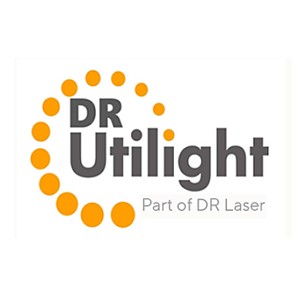
Laser Pattern Transfer Printing for High-Viscosity Pastes: Enabling Future Challenges in Microelectronics, Advanced Packaging & Photovoltaic.
The miniaturization and complexity of modern microelectronics and advanced packaging present significant manufacturing challenges, often requiring the use of specialized low-viscosity inks and expensive plating processes. To address these limitations, we introduce Pattern Transfer Printing (PTP™), a novel laser-based, non-contact technology capable of microscale printing with high-viscosity pastes.
This technology enables the use of standard metal pastes, such as silver, copper, and solder, to produce high-resolution conductive patterns and electrodes. PTP™ has been successfully implemented in the photovoltaic (PV) industry for high-throughput, mass production, achieving fine-line fingers as narrow as 10 μm for both TOPCon and HJT cell technologies.
Furthermore, PTP™ serves as an effective alternative to costly plating methods in the semiconductor industry, capable of printing solder bumps down to 20 μm for advanced packaging applications. The unique capabilities of PTP™—combining high-resolution patterning, material versatility, and high aspect ratios—make it a key enabling technology for the next generation of semiconductor and microelectronic manufacturing.
Dresden Integrated Center for Applied Physics and Photonic Materials - TU Dresden
Karl Leo
Professor Fr Physik
Leaftronics: novel devices
based on leaf skeletons
There is an urgent need to realize sustainable electronic systems. Here, we propose
lignocellulose leaf skeleton structures extracted from tree leaves as a novel approach. Leaf
skeletons ca be incorporated in flexible biosourced substrates with an environmental impact
much lower than conventional materials. Furthermore, leaf skeletons serve well for the
creation of semitransparent, metallized electrodes. We have shown that that it is possible to
independently tune the optical transmittance and the sheet resistance of the electrodes. Low-
cost fabrication and ease of processing makes these ubiquitously available biomaterials
interesting for many other applications.
ELANTAS Europe GmbH
Berit Schuster
Visible
Printed Electronics in the fast lane: Paste technologies driving tomorrow’s mobility
Printed electronics are rapidly transforming the automotive industry, enabling smarter, lighter, and more integrated components. This talk focuses on the development of functional pastes for key automotive applications.
Depending on the use case, such as touch interfaces with In-Mold Electronics (IME), sensors, or heating elements, specific requirements must be met regarding electrical properties, adhesion, flexibility, thermal stability, and processability. The complexity of these applications demands precise tuning of paste formulations to match the substrate, printing method, and final function within the vehicle. Application-specific customization and deep technical understanding are essential to ensure reliable and durable solutions.
Eastman Kodak
Carolyn Ellinger
Visible
Flexo for High-Resolution Roll-to-Roll Manufacturing
Mass-produced components are either exact replicates, or contain a high percentage of replicate circuitry, making their manufacture well suited for “analog” print technologies. While screen printing dominates current printed electronics manufacturing, the use of roll-to-roll flexography can be advantaged for volume production of high-resolution designs. This talk will provide an overview of the benefits and challenges of “going roll-to-roll” and using flexo. Examples and data will be shared from lab-scale and production scale evaluations.
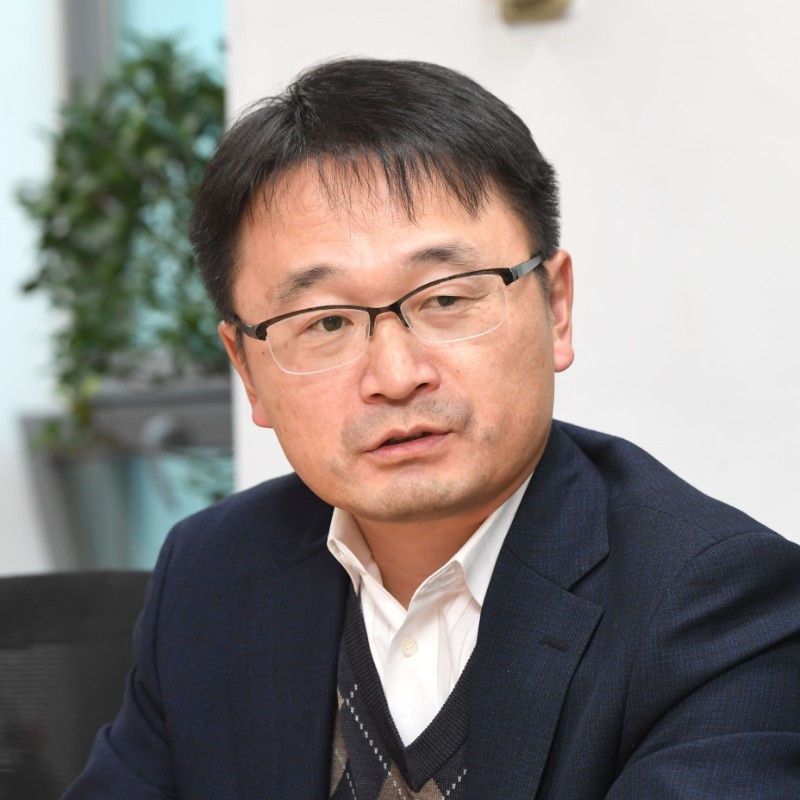
Enjet
Doyoung Byun
CEO
Redefining Functional Printing: Innovations in EHD Inkjet Multi-Nozzle
Technology
Electrohydrodynamic (EHD) inkjet printing is rapidly gaining traction as a next- generation technology for high-resolution, high-viscosity material deposition across semiconductor, display, and bioelectronic applications. While traditional EHD systems have focused on single-nozzle configurations due to challenges such as electrical crosstalk and inter-nozzle interference, industrial demand for high- throughput solutions is driving innovation toward scalable multi-nozzle architectures. This presentation will explore the fundamental principles of EHD printing and highlight recent advancements enabling reliable multi-nozzle operation. We will introduce novel head designs that mitigate electrical interference and enable stable jetting of viscous materials with micron-scale precision. These developments position
EHD multi-nozzle technology as a key enabler of next-generation additive manufacturing and printed electronics.
Fraunhofer EMFT
Alaa Abdellah
Head of Department Flexible Systems
Endless electronics by R2R processing
At Fraunhofer EMFT, the latest advancements in digital lithography unlock new opportunities for high-throughput, sustainable electronics manufacturing. By combining a direct-write UV exposure system tailored for fully automated roll-to-roll (R2R) operation with a semi-additive processing approach, we enable the production of ultra-long, even theoretically endless, high-resolution metal patterns. A digitally controlled stitching technique ensures seamless alignment over extended foil lengths, expanding the capabilities of continuous electronics manufacturing.
This versatile platform supports a wide range of applications. Examples include tamper protection foils, flexible superconducting interconnects, and high-density flexible cables for medical catheters. Our technology further allows assembly and integration of packaged or bare die components via advanced bonding methods. We seamlessly combine printing, digital lithographic patterning , and precision integration techniques to deliver adaptable solutions tailored to specific functional and industrial demands.

Fraunhofer ENAS
Frederic Güth
Research
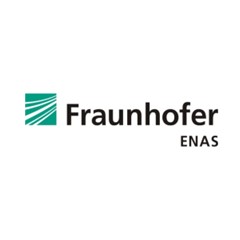
Ultra-thin Parylene-based Printed Circuit Boards for the next generation of flexible electronics
Flexible electronics and sensors are a key enabler for current technology trends such as Industry 4.0 or the Internet of Things. Particularly, these flexible devices can be used for the realization of geometry adaptive devices, wearables or electronics that can be embedded into light weight structures. To enable the next generation of flexible electronics, a new approach for the fabrication of an ultra-thin and highly flexible printed circuit board (PCB) with a total thickness of only 20 µm or even less is presented.
This PCB bases on the thermoplastic polymer Parylene, which combines a variety of unique properties. For the realization of ultra-thin flexible PCBs, Parylene was used as a substrate, a dielectric between the metallic redistribution layers (RDL) as well as for the encapsulation. The RDL were deposited and patterned by standard microsystem technologies, such as sputtering, lithography and wet chemical etching using various metals, such as gold, copper, and aluminum. Additionally, printing technologies using screen printing and aerosol jet printing were investigated. Doing so, multiple RDL can be realized, which was tested for up to three RDL, but is scalable to even more. The electrical connection between the various RDL was realized by etching vertical vias through the Parylene using oxygen plasma. For the contact formation through the vias, different methods were investigated again including sputtering, printing and electrochemical deposition. Finally, the electrical properties were measured and found to be excellent for flat and bent conditions.
Besides the fabrication of the ultra-thin PCB itself, the integration of electronic and sensory components on this PCB is crucial. Doing so, the direct fabrication of components on the PCB was successfully demonstrated and, in parallel, the integration of discrete devices is investigated addressing several technologies such as soldering, wire bonding, and printing of conductive adhesives. Utilizing the unique properties of Parylene, also completely new integration approaches can be realized, which include the embedding of electronic components and the transfer of components.
Fraunhofer Institute for Laser Technology (ILT)
Adam El-Sarout
Master of Science
Optimizing Local Conductivity in Printed Electronics: A Laser-
Controlled Approach
In the era of digitalization and Industry 4.0, sensor technology is pivotal for real-time
monitoring and data collection, significantly impacting product life cycle management.
Traditional strain gages are produced via complex lithographic processes and require
manual bonding, leading to potential quality inconsistencies affecting data accuracy.
Direct application through digital printing offers a promising alternative, aiming to reduce
production costs while enhancing quality assurance.
Printed electronics require the ink to be sintered for conductivity, with most processes
striving for maximum conductivity. However, the printing process often results in
inconsistent local conductivity, impairing sensor performance. Laser technology provides
a solution by enabling precise control over the local sintering degree, thus optimizing
conductivity. Initially, low-power sintering is applied, followed by conductivity
measurement, potentially through contactless THz radiation. Local conductivity variations
due to printing inconsistencies are then addressed with a second sintering step to
standardize and improve sensor quality.
This study explores the impact of laser parameters on the local conductivity of thin silver
layers during both sintering steps, identifying defect sources and achieving resistance
fluctuations below 1 Ω. This method aims to fulfill stringent commercial strain gauge
sensor requirements.
Fuji Corporation
Ryojiro Tominaga
Product Manager
Additively manufactured multi-layer and stacked circuits with embedded electronics components
We have confirmed manufacturing capability of multilayer circuit boards using additive methods by forming silver nano-ink circuits with an inkjet printer and molding UV-curable resin substrates. Furthermore, by combining it with ultra-low temperature surface mount technology, it is possible to realize devices that encapsulate components in three dimensions. This technology not only enables the realization of devices with new geometries but also will indicate the potential to fundamentally transform the way we approach manufacturing in electronics. FUJI will continue to engage with additive manufacturing electronics and challenge its applications in the industry.
GE Aerospace
Felippe Pavinatto
Senior Engineer - Additive, Printed Electronics
Additive Electronics for Harsh Environment Applications in Aerospace
GE Aerospace has been exploring the advantages of using printed electronics for the manufacturing of embedded and non-planar devices and systems for harsh environment applications.
Halocell Energy
Tom Fontaine
Director
Path to Commercializating Roll-to-roll Lightweight Flexible Perovskite Solar Modules.
Since their introduction in 2009, perovskite photovoltaics have rapidly advanced, achieving power conversion efficiencies of 26.7% under standard solar illumination and over 44% under low-intensity indoor lighting. Despite improvements in efficiency, stability, and scalable manufacturing methods, transitioning from lab research to large-scale production remains challenging, with obstacles including scalable deposition techniques and minimizing material waste. A fully scalable roll-to-roll printing process has been developed to produce lightweight, flexible perovskite solar modules, offering high power density in low-light environments and extended lifetimes, particularly suited for IoT applications requiring long-term autonomous operation.
Hamamatsu
Alexander Görk
Visible
Leveraging Laser Processing for Sustainable Printed Electronics – Laser Sintering, Encapsulation & Soldering
Laser thermal processing is by far the most effective way to heat up NIR-absorbing materials.
The first step in sustainability is choosing green materials, followed by selecting energy-efficient technologies.
We offer enabling solutions in laser sintering, encapsulation or soldering through innovative partnerships with material suppliers, institutes, and system integrators.
Hangzhou Microquanta Semiconductor
Yang
Bridging the Gap: The Commercial Readiness of Perovskite PV
Perovskite photovoltaics have shown remarkable potential in the laboratory, but the path to commercial viability has demanded solutions to persistent challenges in stability, efficiency, and scalable manufacturing. This presentation outlines our journey in addressing these hurdles—ranging from material degradation and device architecture to module production and international certification.
By sharing lessons learned through real-world deployment and industrial validation, this talk offers a grounded technical perspective on how perovskite PV is evolving into a commercially ready solar technology—poised not only to complement, but to surpass traditional silicon in key applications.
Heliatek
Martin Hermenau
VP Product Innovation
Certified, flexible and lightweight PV modules on a commercial scale
Ultra-thin chiplets including individually designed CMOS circuits can be integrated on flexible foils and elsewhere to enable outperforming applications. It is shown that wafers from a powerful BCD-on-SOI platform can be utilized for Micro-Transfer Printing. Micro-Transfer Printing is an emerging technology that de-attaches, transfers and integrates chiplets with very high precision and throughput at the same time. The fabrication flow for CMOS post processing is discussed that enables free standing chiplets having a tether and anker structures still holding chiplets in place.
Helmholtz-Zentrum Berlin
Florian Matthies
Researcher
Challenges of consistent solution processing of perovskite solar cells and modules
Consistent processing, reliable metrology, and structured data handling are essential for managing halide perovskite solar cells. This talk summarizes HZB's activities on solution-processed perovskite solar cells and the needs of a standardized data management tool enabling process control, traceability, and faster scale-up. Our approach involves combining experimental data with metadata-rich logging and standardization workflows. Proper data structures not only support FAIR and transparent research but also lay the groundwork for automation and machine-assisted process optimization in perovskite solar cell development.
Henkel
Thibaut Soulestin
Application Engineer EIMEA
High Performance Inks for Cost Efficient Manufacturing of Printed Electronics
With more than 20 new product launches over the last decade, Henkel Printed Electronics is committed to bring sustainable innovations to our customers, accelerating their development. This presentation highlights different approaches for more cost-efficient manufacturing. Highly conductive silver, or silver plated copper, inks prove to be cost efficient for large area antennas. Inks compatible with electrically conductive adhesives or low-temperature solder pastes enable hybrid electronics. Pad-printed inks bring functionality directly onto a 3D surface, reducing the complexity of integrating copper-etched circuits.
Heraeus Electronics
Ryan Banfield
Bridging the Gap Between Additive and Subtractive Technologies: the Solderable Polymer Revolution.
Polymer thick-film (PTF) technology has long been a foundational element in the fabrication of low-cost, flexible electronic circuits, particularly where substrate temperature limitations exist. Despite its advantages—low-temperature processability and compatibility with flexible substrates—traditional PTF conductors have faced major adoption barriers due to their poor solderability and reduced thermal stability.
Representing a significant leap forward in the diminishing line between additive and subtractive technology, Heraeus will lead a discussion surrounding how the implementation of solderable polymer thick film into additive applications helps to accelerate a future moving away from the cost heavy and negative environmental impact manufacturing process of subtractive technology.

HighLine Technologies
Maximilian Pospischil
Managing Director

Scalable Solutions, from Microextrusion to Coating
With the vision to revolutionize PV-metallization, HighLine was founded in 2019. Along with extremely homogeneous fine lines (<20um) that are dispensed at high speeds (>500 mm/s), the process portofolio has expanded towards other scalable dispensing approaches as well as intermittent coating of e.g. cathode layers. Customized nozzle-Kits are combined with different sizes of MONO and MULTI print head systems. Thanks to our automation capabilities that were demonstrated with our cuckoo integration units and an AI controlled recipe improvement algorithm, the technology is applicable for multiple production cases.
Holst Centre
Stephan Harkema
Senior Researcher
Recyclability of In-Mold Electronics
Hybrid & Printed Electronics (HPE) offer many advantages compared to conventional printed circuitry boards (PCBs), including reduced thickness and weight, increased freedom of design and form, simplified product integration, wear comfort and conformability, the use of recyclable thermoplastics, and additive printing of metal circuitry. A direct comparison of HPE- and PCB-based electronics at product level reveals that HPE indeed poses a lower environmental burden. Moreover, several circular practices may be used to further build on this first favourable outcome. At present, most HPE is not readily recycled, in part due to their unique selling points. HPE typically contains less (printed) metal than PCBs, making recycling of these metallized plastics less attractive for recyclers. Furthermore, the seamless integration of metals, semiconductor components and plastics increases the complexity of material salvation at end-of-life. This is especially the case with In-Mold Electronics, where the circuitry and components are over-moulded with a thermoplastic encapsulation. Our presentation will elaborate on our closed-loop recycling approach with high yields for plastics, metals, and embedded components.
Hummink
Elisa Duquet
Sales and Marketing Analyst
HPCaP (High Precision Capillary Printing) : A Technology for Next-Generation
Manufacturing
High Precision Capillary Printing (HPCaP) technology redefines printing at the micron scale by leveraging capillary forces and resonance, eliminating the need for external energy sources such as UV, lasers, or pressure. Inspired by Atomic Force Microscopy (AFM), HPCaP employs a glass micropipette attached to a macro-resonator oscillating at controlled frequencies. This mechanism enables precise material deposition with resolutions from 50 μm down to 100 nanometers, adapting seamlessly to substrate topography in real time. Unlike conventional inkjet printing; HPCaP relies solely on capillarity, allowing the deposition of a wide range of materials as well as high viscosity materials, including polymers, conductive inks, and biomaterials. Its ability to print high-aspect-ratio structures and fine interconnects makes it ideal for semiconductor packaging, display repair, biosensors, and even watchmaking. With its sub-micron accuracy, adaptability, and compatibility with numerous inks, HPCaP stands as a versatile and sustainable solution for next-generation manufacturing challenges.
INO, d.o.o.
Matjaž Finžgar
Head of Sales at INO SD Print
From R&D to high volume production and importance of modular equipment which is able to upgrade based on stage of production.
Strategic progression from R&D to high-volume manufacturing in screen-printed electronics, emphasizing the importance of automation, quality control, and process optimization at each stage. INO Modular Screen Printing equipment —a scalable solution that allows manufacturers to seamlessly upgrade from semi-automatic to fully automated production without replacing the core system, ensuring long-term flexibility and a high return on investment.
ImageXpert
Jochen Christiaens
Regional Manager
Selecting the Right Inkjet Printhead for Advanced Electronics Applications
Inkjet printhead selection is a critical step in the development of high-performance printed electronics systems. The printhead directly impacts print resolution, material compatibility and selection, production throughput, and overall process reliability. This presentation will explore a structured approach to printhead selection tailored for advanced printed electronics applications, where functional inks must be jetted with high precision and consistency. We will examine the key parameters influencing printhead choice, including drop volume, nozzle density, waveform customization, material compatibility, and more all within the context of application-specific requirements.
We’ll compare the latest advancements from leading piezoelectric printhead technologies and highlight performance trade-offs and integration considerations for both development and production environments. Real-world case studies will be used to illustrate how different printhead architectures perform with challenging ink formulations and substrates. Attendees will leave with a clear methodology for evaluating and selecting printheads that align with their performance goals, manufacturing constraints, and future scalability.
Institut Photovoltaïque d'Île-de-France (IPVF)
Nicolas Vandamme
Integration, Prototyping Platform Manager
Lab2fab line: A testbed for the development & testing of perovskite solar cells & modules
After decades of research and development, commercial Si solar cells are nearing their
fundamental limit in terms of power conversion efficiency. To bypass this limit and further
decrease the cost of solar electricity, one promising path is to complement Si with an
additional light absorber to use the incoming light more effectively. Metal halide
perovskites, with exceptional optoelectronic performance, are one of the prominent
candidates for such a combination.
After several years of research, the IPVF has developed manufacturing processes that are
ready for industrialization.
To this end, IPVF is building a lab2fab perovskite pilot line in Paris-Saclay. At the end of
2025, it will be opened to companies wishing to develop perovskite cells and modules
with different substrates or encapsulants, or to test different precursors.
What's more, the IPVF also boasts top-level testing facilities and scientific expertise to
analyze materials and qualify the potential of photovotlaictechnologies. Our technology
platform serves extended applications in thin films development, material engineering,
photonics, semiconductors...
Presented by Nicolas VANDAMME, Integration and Prototyping Platform Manager at
Institut Photovoltaïque d'Ile-de-France (IPVF)
Company description
IPVF - Institut Photovoltaïque d’Île-de-France, is a global Research, Innovation and
Education center, which mission is to accelerate energy transition through science &
technology.
Gathering industrial PV leaders (EDF, TotalEnergies, Air Liquide, Horiba and Riber) and
world-renowned academic research teams (CNRS, Ecole Polytechnique), multi-
disciplinary and international IPVF teams conduct research for clean energy
technologies. Supported by the French State, IPVF is labelled Institute for Energy
Transition (ITE).
Karlsruhe Institute of Technology
Norbert Willenbacher
University Professor
New Materials for Metallization and Interconnection of Perovskite Cells: Low-Temperature Processing & Reduced Silver Consumption
The goal of significantly reducing CO2 emissions requires a massive expansion of PV installations worldwide. Perovskite cells offer a unique opportunity to enable this at a low consumption of precious resources and energy. This requires metallization and interconnection materials that can be processed at low temperatures. In order to avoid bottlenecks in the supply of silver for contacting and inter-connection of solar cells, the specific silver consumption in the production of solar cells and PV modules must be constantly reduced.
The capillary suspension phenomenon (Koos and Willenbacher, Science 331, 897 2011) provides a unique opportunity to design printable pastes and adhesives with high electrical conductivity at low silver consumption. The addition of a second immiscible liquid to a suspension of particles leads to the self-assembly of a strong particle network controlled by capillary forces in such ternary solid/fluid/fluid systems. This results in a drastic change of texture and flow behavior, but also reduces the percolation threshold leading to a high electrical conductivity at low volumetric particle loading in composites including conductive fillers such as silver particles.
Pastes for the metallization of temperature-sensitive Perovskite solar cells are sintered at low temperature (< 150°C) and include polymeric additives to provide cohesion of printed finger lines and sufficient adhesion to the transparent conductive oxide (TCO) surface layer. The required polymer content can be reduced and the surface properties of the conductive particles in the contact areas can be designed in such a way that high electrical conductivity and low contact resistance are achieved.
The TECC wire concept uses round copper wires for cell interconnection. These wires are coated with a thermoplastic polymer filled with conductive particles. The polymer ensures good mechanical adhesion to the cell surface and the conductive particles enable low contact resistance. Good interconnection at gentle processing conditions in terms of pressure and temperature has been achieved using thermoplastics with low silver content.
Thermoplastic busbars (patent pending) is a recently developed concept further simplifying cell interconnection and reducing resource usage. Electrically conductive, thermoplastic materials melting at low temperature are applied in the metallization process and untreated copper wires are applied in a fast, low temperature stringing process.
The capillary suspension concept has been utilized first to design printable, electrically conductive materials including silver particles but the transfer of the concept to composites including other conductive particles such as copper and silver coated copper or glass particles is straight forward.

Lithoz
Lisa Mikiss
Director Materials Engineering
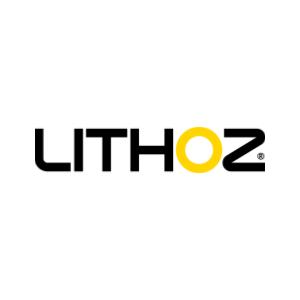
Additive Manufacturing of Dielectric Ceramics and Ceramic–Metal Components Using Lithography-Based Ceramic Manufacturing
Lithography-based additive manufacturing (LCM), a Vat photopolymerization (VPP) technology, has become a standard method for fabricating ceramic components due to its high design freedom, fine resolution, and a wide availability of materials. However, the realization of ceramic multi-material systems using VPP is still in an early stage of development. This is primarily due to the unfavorable optical properties of functional materials (e.g., high light absorption and refractive index) and the challenges associated with co-sintering material combinations required for electronic applications. In this work, the additive manufacturing of dielectric and ceramic-metal multi-material components—such as LTCC ceramics with copper or silver—was investigated using a custom-developed VPP system equipped with a dual-material-vat setup. This system includes an integrated in-line cleaning unit that enables contamination-free switching between different materials. Highly filled, photocurable suspensions with high solids loading were used to ensure precise shaping and clear material separation. Various dielectric ceramics were successfully printed, debinded, and sintered; the resulting components exhibited electrical properties—specifically permittivity and Q factor—comparable to those of tape-cast reference samples (ε = 3–60). Additionally, selected ceramics were co-printed with silver or copper and successfully co-sintered, enabling the fabrication of functional multi-material components. These results demonstrate the significant potential of ceramics-based VPP for producing functional ceramic and multi-material components with application-specific electrical properties. Future work will focus on minimizing thermally induced stresses during co-sintering by optimizing the rheological and thermal expansion properties of the suspensions.
Lockheed Martin
Paul Gaylo
Supplier Quality Engineer
Flexible Hybrid Electronics in the Wild: How Copper Printing and Flexible RF Circuits Made it Out of the Lab and Into the Field.
The art of the possible when it comes to Flexible Hybrid Electronics (FHE) has been socialized across the electronics technology community for well over a decade. Consistency in technical gatherings and the sharing of progress has demonstrably grown the art of FHE and consequently organizations have invested in FHE research. The research has led to product and service providers being founded or expanding their offerings to the industry. From the perspective of an FHE end user, this presentation aims to dig deeply at the technology transition paradigm: How does FHE move from a laboratory demonstration to a commercialized real-world application?
Myrias Optics + University of Massachusetts Amherst
James Watkins
Founder/CSO/ Professor
Printed Metaoptics for AR/VR and Photonics
Full wafer scale fabrication of high-efficiency, all-inorganic optical devices including metalenses, AR/VR waveguides, and polarization-controlled metasurfaces and splitters for operation at visible and near-IR wavelengths is demonstrated by using additive nanoimprint lithography with nanoparticle dispersion-based inks. For example, approximately one-thousand 4-mm-sized metalenses are fabricated per 8-inch wafer with high optical efficiency and excellent uniformity across the wafer. The absolute and relative efficiencies of the metalenses are more than 80% and 90%, respectively, which are approximately 95% of the maximum simulated efficiencies for this specific design. The close agreement between simulated and realized efficiencies indicates that future improvements are possible, and actual efficiencies are not limited by materials or process. The use of nanoparticle dispersion inks enables the fabrication of all-inorganic high MTF AR waveguides with imprint cycle times of a few minutes. Refractive index of the metalens, metasurface, and waveguide structures can be increased up to 2.3 using a short post-imprint atomic layer deposition process. Combined these attributes offer superior performance and a reduced cost of manufacturing. The imprinted metalenses and waveguides are free from organics due to a post-imprint processing step and exhibit outstanding dimensional and optical stabilities, as confirmed by accelerated environmental testing. This work opens a path for true, full-scale additive manufacturing and integration of meta-optics on optical glass and Si platforms.
NGK Europe
Daniel Harden
Key Account Manager
Ultra-Thin, Lightweight, and Safe Li-ion Rechargeable Batteries for Next-Generation Wearables and IoT Devices
The growing demand for compact, high-performance electronics—from medical wearables to next-generation IoT devices—requires battery technologies that are safe, lightweight, and space-efficient. We present ultra-thin, rechargeable Li-ion batteries featuring a semi-solid-state design with crystal-oriented ceramic electrodes. This architecture reduces liquid electrolyte content and removes organic binders, improving safety and thermal stability. Engineered for fast charging and seamless integration into skin-contact and miniaturised devices, our technology supports a wide range of applications across healthcare, consumer electronics, and industrial IoT. In addition, EnerCera batteries realise exceptionally low self-discharge, making them highly compatible with energy harvesting systems such as photovoltaic cells, ideal for autonomous IoT devices requiring long-term operation without frequent maintenance.
Nano-C, Inc.
Henning Richter
VP, R&D
Innovative Interface Materials for Perovskite Photovoltaics
Suitable interface materials are highly critical for single-junction but also tandem Perovskite photovoltaics both in terms of power conversion efficiency and, particularly, stability. Using its long experience with fullerenes and fullerene derivatives addressing improved performance of organic photovoltaic devices as starting point, Nano-C has developed a range of new generation electron transporting interface materials allowing for passivation and prevention of delamination. C60 or C70 fullerenes bearing suitable functional groups such as phosphonic, carboxylic or ammonium chloride/iodide allow for the stabilization of the Perovskite phase and adhesion on the adjacent metal oxide layers. Electronic properties can be adjusted for optimized band alignment depending on the specific Perovskite phase used. Molecules synthesized by Nano-C will be described and use cases discussed. The industrial scale manufacturing of fullerenes and new generation fullerene derivatives intended to accelerate the commercial deployment of Perovskite technology will be presented.
NanoPrintek
Masoud Mahjouri-Samani, PhD
Inkless Multimaterial Printing Directly from Raw Materials - Breaking the Barriers in Cost, Time, Pollution, and Supply Chain
The current printed electronics manufacturing technologies are ink-based, requiring i) expensive and extensive ink formulation processes, ii) the need for a complex and polluting supply chain, and iii) the need for high-temperature post-processing. This has created issues such as surfactants and contaminants, limited availability of printing ink, and unstable ink properties. NanoPrintek presents its disruptive “dry multimaterial printing” technology, transforming the current printing ecosystem. This presentation highlights the unparalleled capability of this technology and demonstrates how it can print directly from raw materials, including metals, semiconductors, insulators, alloys, composites, and even a piece of rock. The key technology advantages include 1) on-demand and in-situ generation of various pure nanoparticles without contaminations, 2) in-situ and real-time laser sintering of nanoparticles on various substrates with no post-processing, and 3) multimaterial printing of hybrid and tunable nanocomposite materials and structures. This supply-chain-agnostic, clean, and highly cost-effective technology transforms the electronics printing ecosystem into a new realm where pure, multimaterial, multifunctional, and hybrid materials are printed on demand, enabling various applications across the electronics, healthcare, automotive, aerospace, defense, and energy industries.
National Research Council Canada
Chantal Paquet
Senior Research Officer
3D electronics with volumetric additive manufacturing
Volumetric additive manufacturing (VAM) is a newly developed polymer 3D printing technique that uses tomographic projection to print all-at-once enabling objects to form orders of magnitude faster than traditional vat polymerization 3D printing methods. This technique also has the unique ability to print over top of an existing structure, a method we term overprinting. This technique has inspired the NRC to modify this technique to 3D overprint a pattern of a functional polymer overtop of an existing object and subsequently metallized the newly printed pattern to produces 3D printed conductors. This presentation will introduce volumetric additive manufacturing, highlight challenges of printing with VAM and the development of photoresins and printing requirements needed to generate high resolution 3D electronics.
NextFlex
Fabian Schnegg
Fab Manufacturing Manager
Commercialization of Additively Manufactured Electronics
NextFlex is actively evolving additively manufactured electronics (AME) beyond development and into commercialization. In this talk, the NextFlex mission of maturing the manufacturing readiness and expanding the industrial base toward high volume production will be discussed. We represent more than 200 members and partners from industry, academia, and government working together to establish the necessary industrial base for widespread adoption. Through our partners, we know of several examples of this technology in the marketplace today and welcome discussions with the broader TechBlick audience to expand this base of evidence.
Notion Systems
Kai Keller
Visible
It's not nozzle count alone that matters: n.jet EHD powered by Scrona
It is widely agreed that additive processes make electronics production more sustainable, while reducing waste and cost at the same time.
While inkjet has been very successful in this area, and the adoption of this mature digital printing technology is still ongoing, it is also clear that this inkjet has its limits. While excelling in productivity, the limitations of inkjet in viscosity, as well as minimal feature size are widely known.
Electrohydrodynamic Deposition (EHD) pushes the limits of digital printing, both, in feature size, as well as in viscosity. In this presentation we will take a closer look to productivity of this technology and present some recent developments and potential application areas.

OET Energy Technologies
Stergios Logothetidis
Director
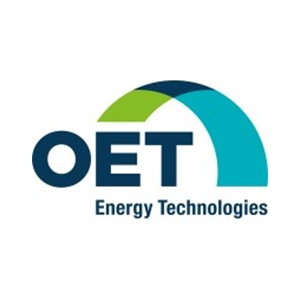
Scaling Printed Photovoltaics: From 3rd Gen PV Innovation to Giga Fab
Industrialization
The transition from laboratory-scale 3rd Gen PV innovations to large-scale industrial manufacturing represents a defining shift in the evolution of renewable energy technologies. This presentation outlines the pioneering work of OET and the Flex2Energy initiative in establishing the first-ever Giga Fab dedicated to the automated production of printed photovoltaics. Leveraging advanced Roll-to-Roll (R2R) printing and automated assembly, the Automated Manufacturing Line integrates real-time quality control via in-line metrology, AI-driven analytics, and Industry 4.0 frameworks to enable scalable, cost-effective, and sustainable production. OET focuses on delivering customized Integrated Organic Photovoltaic (OPV) solutions for a wide range of applications, including Building-Integrated PVs (BIPVs), Agricultural PVs (AgriPVs), and Vehicle-Integrated PVs (VIPVs), offering flexible, lightweight, and visually adaptive semitransparent solar modules. These solutions aim to harmonize energy generation with the built environment and agriculture, minimizing land use while maximizing energy output. This talk highlights how the merging of advanced materials, digital manufacturing, and intelligent automation positions printed photovoltaics at the forefront of the clean energy transition. The presentation will demonstrate the critical role of scalable OPV and PPV solutions in achieving global net-zero goals.

PINA Creation
Maryam Bari
CEO

Boosting Stability and Efficiency in Perovskite and Organic Solar Cells through Scalable Metal Oxide Nano Inks
PINA Metal Oxide Nano Inks: Engineered Electron Transport Layer (ETL) and Hole Transport Layer (HTL) Solutions for High-Performance, Low-Temperature Perovskite and Organic Solar Cells.
Efficient and stable perovskite and organic solar cells rely heavily on the quality of their ETL and HTL—yet current organic and high-temperature metal oxide materials often suffer from poor stability, interfacial defects, high cost, and limited compatibility with flexible substrates. PINA Creation addresses these challenges with advanced ZnO and SnO₂ nano inks (ETL) and NiO nano ink (HTL) that enable high-quality thin-film fabrication below 120 °C in just a few minutes. These formulations are chemically engineered for optimal interfacial contact and energy alignment, offering superior compatibility with perovskite layers in both n-i-p and p-i-n architectures, resulting in enhanced performance, scalability, and long-term
durability.

Panasonic
Takashi Ohara
Technology Development Manager

Multifunctional Shock Absorb Film Material, Toughtelon
Toughtelon is a high-performance multilayer composite material developed by Panasonic industry, primarily designed for display application. By integrating multiple dissimilar materials into a single structure, it enables significant thickness reduction, contributing to overall device slimness. Its unique molecular architecture ensures high flexural durability across a wide range of temperatures and exhibits self-healing capability when wrinkles form due to deformation. In terms of impact resistance, Toughtelon demonstrates approximately a 165% improvement over conventional materials, while maintaining quality even under repeated mechanical stress. Furthermore, Panasonic Industry's proprietary material design technology allows for customization of properties and functions to suit specific application needs, positioning Toughtelon as a next generation material ideal for flexible and impact resistant components.
Perovskia Solar
Anand Verma
CEO
Charged by Light – Designed for Life
We leverage digitally printed perovskite solar cells to enable battery-free or battery-extended operation in IoT and consumer electronics. Their custom-designed cells perform efficiently under indoor and outdoor lighting, enabling self-powered smart devices such as sensors, wearables, and ESLs. Their Swiss-based production facility targets industrial-scale output of up to one million units per year. At Perovskite Connect 2025, Perovskia will share its scalable production process and integration-ready solutions. Perovskia Solar AG is a Swiss cleantech spin-off from Empa.
Printed Electronics Limited
Neil Chilton
Drop-on-Demand Printing of Highly Viscous Inks
Screen printing remains the dominant method for fabricating printed electronics, largely due to the availability of highly-loaded functional inks that achieve desired product performance in a single pass. These inks typically have high viscosities (>>5k cP) due to their high material loading.
If we wish to use similarly viscous functional inks in a digitally-defined process we know that we cannot use conventional inkjet printing as it relies on low viscosity inks (<100cps).
At PEL, we have developed innovative processes and systems for digital deposition using Piezovalve viscous-jet deposition and other methods. This technology enables drop-on-demand printing of extremely viscous materials. In this presentation, we'll demonstrate several viable methods for digitally printing such highly viscous functional materials.
Prio Optics GmbH
Dr. Qihao Jin
Chief Technology Officer
Precision Through Additive Manufacturing: Inkjet-Printed Optical Coatings
Inkjet printing achieves unparalleled precision in optical coatings by depositing functional inks— polymers or nanoparticles—onto substrates with nanoscale accuracy. This additive technique enables tailored layer thickness, refractive index, and intricate patterns for anti-reflective, spectral filtering, or optical intensity control applications. Unlike traditional vacuum deposition, it minimizes material waste, accelerates prototyping, and scales seamlessly for small- to large-area optics like optical windows, displays, and sensors. The non-contact process ensures minimal contamination, critical for high-performance photonic devices. By optimizing ink formulations and print parameters, manufacturers unlock cost-effective, customizable solutions for optical imaging, medical analysis, and solar energy control, driving innovation in lightweight, high-efficiency optical systems.
Q5D
Ben Monteith
Senior Laser Engineer
5 axis laser-assisted selective metallization of large 3D parts
We have been developing a 5 axis manufacturing cell containing an embedded 100W fibre laser. As part of this we have been investigating various routes for utilising the laser to achieve selective metallization, with the ultimate goal being rapid, end-to-end metallization of complex shapes on 3D surfaces.
In this talk I will cover some of the key mechanisms we have been utilising. The first involves using a maskant, which serves as a barrier layer for subsequent electroless copper deposition. The laser is used to selectively ablate the mask. In the second technique a silver paste is deposited onto the substrate, ablated then sintered. Finally, I will discuss our latest developments with other emerging techniques
RISE
Lars Herlogsson
Senior Scientist
Screen printed stretchable electronics including liquid metals
Soft and stretchable electronics provide unique opportunities for wearable and biomedical applications such as skin electronics, implantable electronics, smart wearable devices and soft robotics. The combination of softness and stretchability allows for the seamless interfacing of curved and deforming systems beyond the capabilities of conventional rigid and flexible electronics. Gallium-based liquid metals have recently received attention for use in stretchable electronics due to their unique combination of fluidity and conductivity.
This presentation explores recent advancements in the development and manufacturing of screen printed stretchable electronics at RISE. In particular, materials and methods for fully screen printed stretchable liquid metal multilayer circuits will be presented. Inks with dispersed liquid metal particles for screen printing and sintering processes based on water spraying have been developed which allow for large-area and high-volume manufacturing.
SOLRA-PV
Yousef Farraj
CEO
The Industrialization of Perovskite-Based Indoor Photovoltaics
High-performance perovskite photovoltaic panels optimized for low-illuminance environments enable continuous power for IoT devices and consumer electronics without the need for disposable batteries. By tailoring the perovskite composition and device stack for spectral alignment with artificial light sources, combined with advanced encapsulation techniques, exceptional efficiency and operational stability are achieved under indoor conditions. The lab-to-fab transition is facilitated through scalable, industry-compatible printing and coating processes ensuring,, cost-effectiveness at scale. This integration of material innovation and manufacturing process control delivers compact, high-power indoor PV modules that advance sustainable, maintenance-free electronics and significantly reduce electronic waste in the rapidly growing energy harvesting market.

